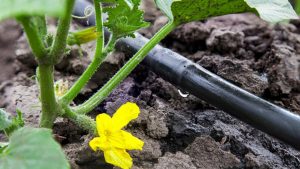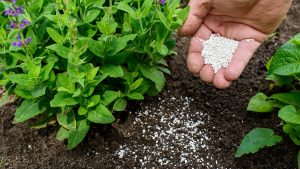The weather now is unpredictable: yesterday it was sunny and plus temperatures, today it’s freezing. Many people remember the times when winter was snowy, spring was warm, summer was hot and moderately rainy, and autumn allowed for harvesting at the end of October. But because of human interference with nature, anomalies occur. Crocuses bloom in winter, it snows in summer, and spring brings us late frosts every year. Warm weather causes flowers to sprout and bloom, but the cold air can kill them. Trees can have bark damage as water, after the snow melts, gets into the cracks and then freezes. The lower the temperature drops on the thermometer, the faster our hopes for a good crop melt away. There are some simple useful tips to protect your plants from cold:
Cover the plant with dense material
Remember, the thicker the material you use, the better it will protect the plant. If you don’t have a thick material at hand, that’s okay. You can use a thin material, but make sure to stack it in several layers. Separate plants can be covered with paper covers or plastic bottles. You should never let the cover come into contact with the leaves of the plant!
Watering the plants
Yes, as strange as it may sound, plants need moisture before frosts. This helps reduce the effects of frost because the moisture begins to evaporate, warming the air and preventing the plants from freezing. Note that the water needs to be heated to about 10 degrees.

Fertilizing
To strengthen the plant and protect it from freezing, fertilize it. For this, you will need a solution of phosphorus and potassium. This mixture should be sprayed on the leaves of your plants. How does this work? With this method, the level of intracellular sap increases, thereby protecting the plant from freezing. But remember that this should be done at least a few hours before the frost, and better a day in advance.

Smothering
One of the easiest ways to protect your plants. For it, you need to light fires on the side of your plot that is most exposed to the wind. Anything that smolders well should be lit, namely dry leaves, scraps, and even grass clippings. This creates a smokescreen that serves as a barrier between the cold and the plants, keeping them from freezing. But this method has one significant disadvantage: if the temperature outside is below 4 degrees below freezing, this method will not help you.
Root Fertilizing
Use nutrients that are high in phosphorus and potassium. Water your plantings at the roots. And that is all! Do this 10 to 12 hours before frost arrives.
Conclusion
Frosts have an extremely negative effect on plants, and even if they can survive them, this kind of stress does not go away – growth is temporarily slowed down, which leads to a decrease in yields. So plants must be protected in any way possible.